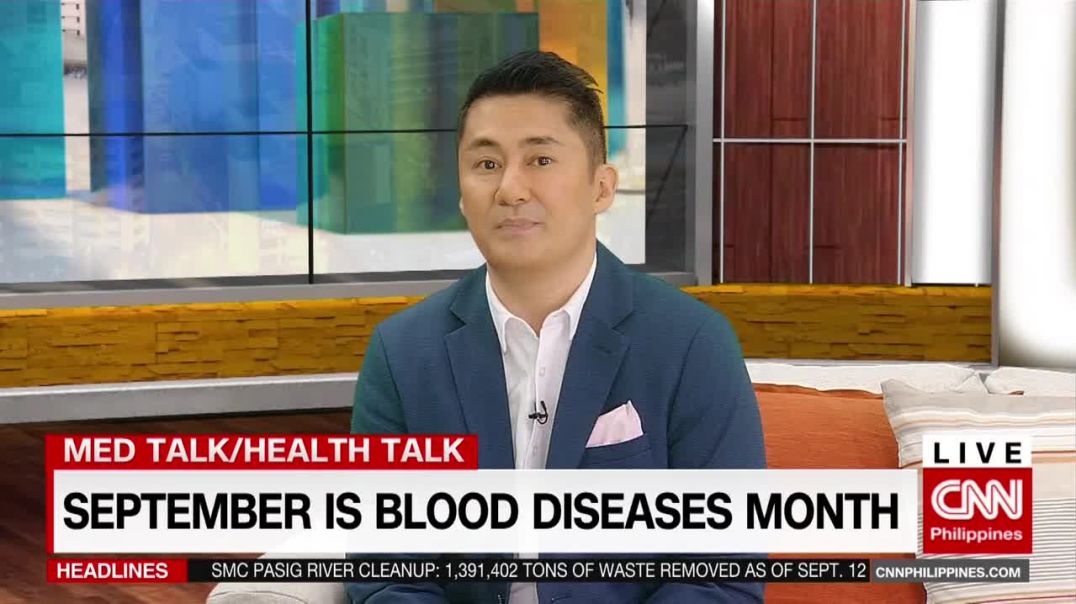Chronic Myelogenous Leukemia | Dr. Tony Talebi discusses
Dr. Tony Talebi discusses "What is Chronic Myelocytic Leukemia (CML)?" with Dr. Pinilla. For Further discussion visit http://www.HemOnc101.com
Dr. Tony Talebi is a Board Certified Hematologist/Oncologist and his private practice, Miami Hematology & Oncology Associates, is located at 151 NW 11th Ave, Suite 303W, Florida 33030. Telephone 786-504-3084, Fax 786-304-3086
What is Chronic Myeloid Leukemia (CML):
Chronic myeloid leukemia (CML, also known as chronic myelocytic, chronic myelogenous, or chronic granulocytic leukemia) is a myeloproliferative neoplasm characterized by the dysregulated production and uncontrolled proliferation of mature and maturing white blood cell granulocytes with fairly normal differentiation.
CML is associated with the fusion of two genes: BCR (on chromosome 22) and ABL1 (on chromosome 9) resulting in the BCR-ABL1 fusion gene. This abnormal fusion typically results from a reciprocal translocation between chromosomes 9 and 22, t(9;22)(q34;q11), that gives rise to an abnormal chromosome 22 called the Philadelphia (Ph) chromosome. It is this derivative chromosome 22 which harbors the BCR-ABL1 fusion gene.
The BCR-ABL1 fusion gene results in the formation of a unique gene product, the BCR-ABL1 fusion protein. This protein results in constant activation of the tyrosine kinase domaine of the cell, leading to constant replication.
The clinical hallmark of CML is the uncontrolled production of mature and maturing granulocytes, predominantly neutrophils, but also basophils and eosinophils. In the absence of treatment, CML has a triphasic or biphasic clinical course as it progresses from a chronic phase to an accelerated phase and on to a terminal blast crisis. Sometimes it goes from chronic phase directly to blast crisis, particularly when the blast phase is lymphoid.
Treatment of CML
Inhibitors of this tyrosine kinase, most notably imatinib (Gleevac), dasatinib (Spyrcel), and nilotinib (Tasigna), have been developed and used successfully to treat CML. Even with therapy, CML can progress from a relatively indolent disease (chronic stable phase) to a more aggressive disorder (accelerated phase), during which time disease control is more difficult to achieve. It can then culminate in an acute leukemia, termed "blast crisis", which is generally refractory to treatment and will require a stem cell transplantation.
Here, Dr. Tony Talebi discusses the general concepts of what is chronic myeloid leukemia (CML) with Dr. Javier Pinilla, an assistant professor of medicine at the Lee Moffitt Comprehensive Cancer Center and a CML specialist.
Dr. Pinilla credentials:
Faculty Rank:
Assistant Member
Titles:
Department/Program Affiliations:
Hematologic Malignancies
Experimental Therapeutics
Immunology
Primary Address:
H. Lee Moffitt Cancer Center &
Research Institute
Education & Training:
MD, University of Zaragoza Medical School, 1990
PhD, University of Zaragoza Medical School, 1990
Resident, La Paz University Hospital, Madrid, Spain, 1992 - Internal Medicine
Fellow, La Paz University Hospital, Madrid, Spain, 1994 - Hematology and Hematotherapy
Clinical Attending, La Paz University Hospital, Madrid, Spain, 1997 - Hematology and BMT
Research Fellow, Memorial Sloan-Kettering Cancer Center, Dept of Leukemia, 1998 - Immunology
Research Associate, Memorial Sloan-Kettering Cancer Center, Dept of Leukemia, 2001 - Immunology
Fellow, Memorial Sloan-Kettering Cancer Center, 2004 - Medical Oncology & Hematology
Resident, New York Presbyterian/Cornell Medical Center, 2006 - Internal Medicine
General Board Certification / SubSpecialty:
Internal Medicine / Hematology
Internal Medicine / Medical Oncology






















SORT BY-
Top Comments
-
Latest comments